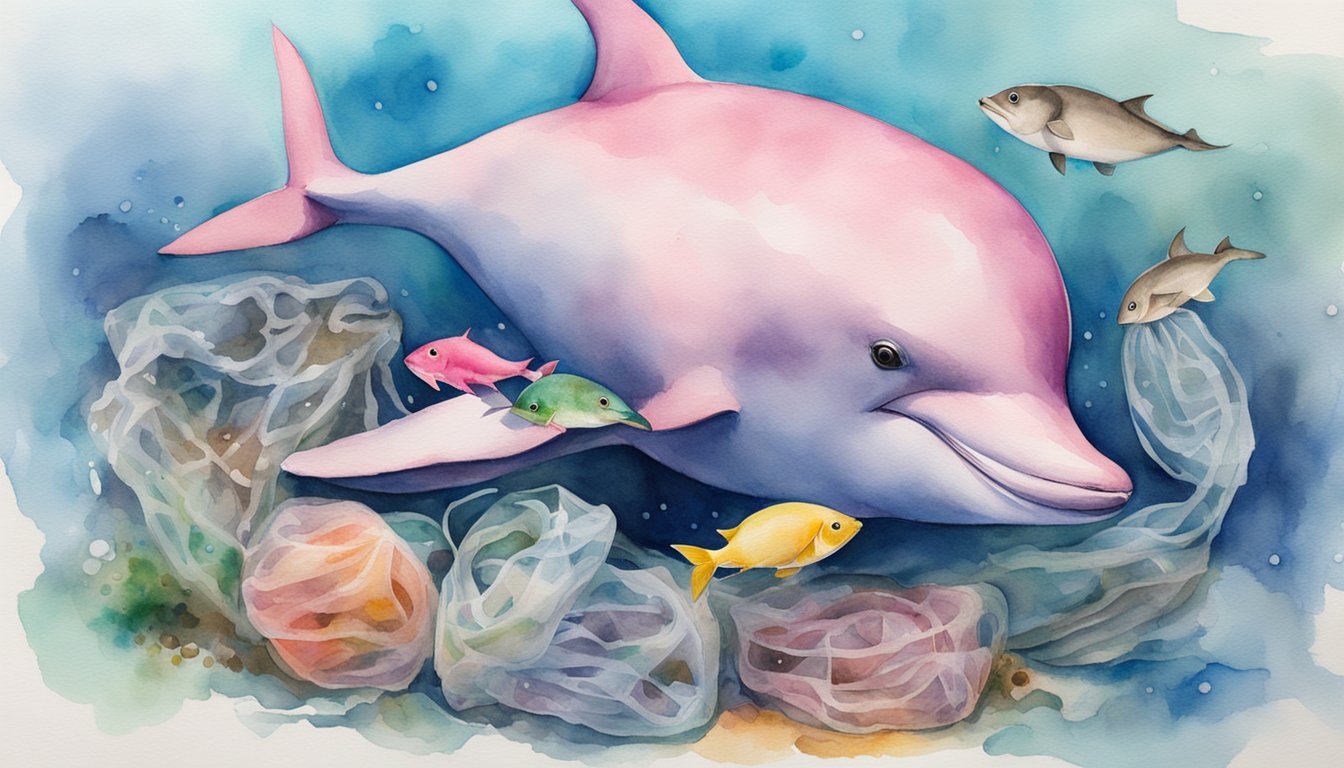Understanding Pink Porpoises
Pink porpoises, often enchanting onlookers with their unusual color, are a distinct group among the cetacean family. This section delves into the specific aspects of their taxonomy, physical features, and habitats that are both fascinating and crucial to their understanding.
Taxonomy and Evolution
Pink porpoises, which include species such as the Amazon river dolphin also known as boto or pink river dolphin, fall under the family Iniidae. The most well-known species within this group is Inia geoffrensis. Taxonomically, they belong to the order Cetacea and are thus related to whales and dolphins. While dolphins are their marine relatives, pink porpoises are freshwater inhabitants.
These mammals evolved from marine ancestors and are linked to a diverse lineage that includes even-toed ungulates in the superorder Cetartiodactyla. They share the class Mammalia, indicating they are warm-blooded, have three middle ear bones, and nurse their young, among other features. The separation of the Inia lineage from other cetaceans points to a rich evolutionary history specific to the freshwater environments of South America.
Physical Characteristics
Pink porpoises exhibit a remarkable pink color, which can range from a subtle hue to a vibrant flush. This pink pigmentation is more pronounced in males, showcasing an example of sexual dimorphism in animalia. Physical attributes such as a robust melon, the absence of a dorsal fin, and broad pectoral fins set them apart from their oceanic cousins. They have a flexible body, a characteristic flattened skull, and a long snout filled with teeth.
Adults typically reach a length of 1.5 to 2.5 meters and can weigh between 100 to 200 kilograms. Unique to their family, their bodies are well-suited for navigating the complex river environments where agility is crucial for survival and foraging.
Habitat and Geographical Distribution
The Amazon River and the Orinoco River Basin are the primary habitats for pink porpoises. These basins cross several South American countries, including Brazil, Bolivia, Peru, Ecuador, and Venezuela, making them a shared natural resource. The freshwater systems of the Amazon and Orinoco basins provide a unique ecosystem where these cetaceans thrive.
They inhabit areas that range from main river channels and their tributaries to floodplains and lakes. The annual flooding cycle of these rivers affects the distribution and behaviors of the porpoises, as they can access new feeding areas during high water periods. The existence of pink porpoises in these vast freshwater systems highlights the biodiversity of the aquatic life in South America’s river networks.
Conservation Challenges and Efforts

The pink porpoise faces significant challenges that threaten its survival despite ongoing efforts to safeguard this remarkable species.
Threats to Survival
The most critical issue for the pink porpoise, also known as the baiji, is its endangered status, primarily due to human activities. The IUCN Red List categorizes them as critically endangered, with some fearing they might already be extinct. Major threats include pollution, notably mercury contamination from industrial processes, and agriculture runoff leading to deteriorated water quality. Dam construction, leading to habitat fragmentation and altered water flows, and deforestation for timber and agricultural land, have significantly reduced the available habitat for the porpoises. Fishing nets, especially gillnets, are particularly dangerous, causing bycatch or incidental catch, which often proves fatal for these mammals. The declining abundance and population size of pink porpoises have been of great concern for conservation efforts.
Research and Protection Initiatives
The plight of the pink porpoise has ignited numerous research and protection initiatives. Conservation groups, including the WWF, have been at the forefront, supporting research to assess the true population size and conservation status to guide protection measures effectively. Efforts to remove dangerous gillnets and prevent bycatch have become a priority. Rescue of orphans and provision of sanctuaries are among the direct actions taken to preserve the species. Awareness campaigns highlight the need for habitat protection, emphasizing the critical link between ecosystem health and porpoise survival. Despite these efforts, the situation remains precarious, with the species teetering on the brink.
Management and research efforts are failing dolphins, porpoises, and other toothed whales shows the complexity of conservation challenges, while initiatives to save the vaquita porpoise, although a different species, exemplify the type of drastic measures necessary to prevent extinction.

